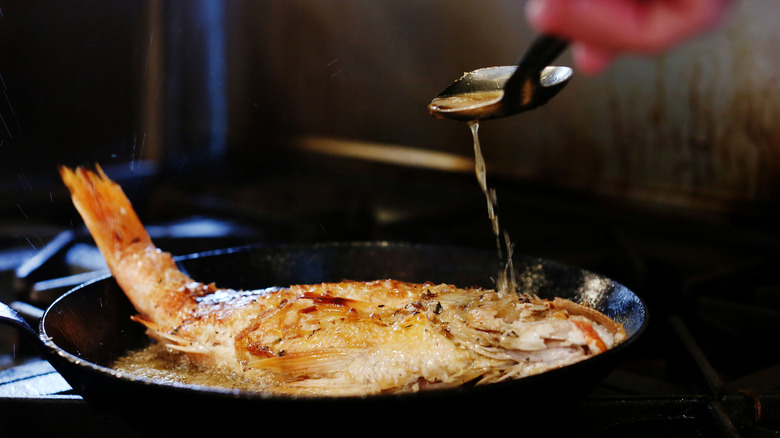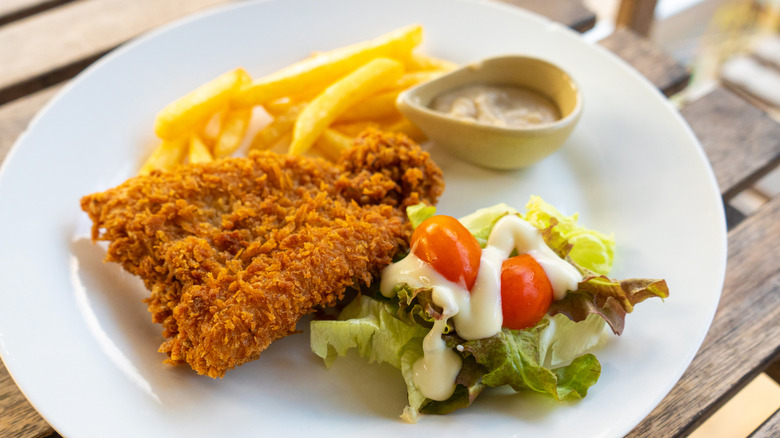The Biggest Mistake You're Making With Fried Fish
Preparing and frying fish can be a simple cooking technique, but it's the little things that can prevent your protein from coming out crispy and delicious. It's way more efficient to cook multiple filets at a time, but this can negatively impact the quality of your dish in several ways. The key to making the best fried fish is to not overcrowd the pan. If too many pieces of fish are placed in a pan at once, the temperature of the oil drops significantly. This lower temperature and moisture results in fish that's more on the soggy side and that even absorbs the oil, versus the crispy exterior that we love so much.
Additionally, a crowded pan gives you more moisture and even less room to flip the fish, which can create tears in delicate cuts like tilapia or flounder. Even if it requires frying fish in batches of two at a time, it's well worth the effort. This ensures there's room to flip the fish but also prevents the crust from steaming.
Fish frying tips
There are a few other mistakes to avoid when frying fish, plus side dishes that complement it the best. Just like with frying potatoes, you want to be sure you pat your fish completely dry. There should be no signs of moisture before adding it to the oil. In addition to preventing an oil-water splatter, this also avoids the dreaded aforementioned moisture. Speaking of oil, a high heat oil like vegetable, peanut, grapeseed, or canola will allow you to crank up the heat without burning your fish.
Once the fish is fully cooked, it might be tempting to soak up any excess oil with paper towels, but this can turn your crispy fish into a soggy mess. Instead, place the fish on a wire rack so that any oil drains and there's no moisture build up. A great crispy fish pairs well with an easy homemade tartar sauce or crunchy coleslaw, but you can also lean into fish and chips or add vegetables like Brussels sprouts or asparagus.


